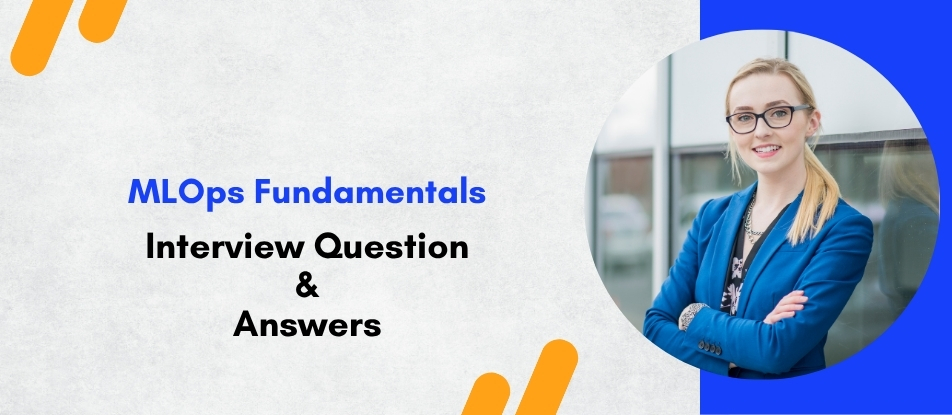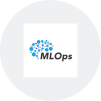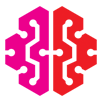
The MLOps Fundamentals course equips learners with essential skills to operationalize machine learning models efficiently. Covering data pipelines, model versioning, CI/CD integration, and monitoring strategies, the course ensures seamless collaboration between data science and engineering teams. Designed for professionals aiming to scale ML solutions, it provides hands-on knowledge of tools and frameworks needed to deploy and maintain robust, reliable, and reproducible AI systems in production environments.
MLOps Fundamentals Training Interview Questions Answers - For Intermediate
1. What is the role of feature engineering in the MLOps pipeline?
Feature engineering plays a crucial role in transforming raw data into meaningful inputs for machine learning models. In the MLOps pipeline, it must be reproducible and version-controlled to ensure that the same transformations are applied during training and inference. Automating feature engineering and tracking feature sets using tools like Feature Store allows for consistency, reusability, and scalability across different ML projects.
2. How do you handle sensitive data in MLOps workflows?
Handling sensitive data involves ensuring compliance with data protection laws like GDPR and HIPAA. This includes anonymizing personally identifiable information (PII), encrypting data at rest and in transit, implementing role-based access control (RBAC), and using secure environments for processing. Proper logging, auditing, and data governance policies are also vital components of secure MLOps workflows.
3. What is a feature store and how does it support MLOps?
A feature store is a centralized system to store, manage, and serve features used in machine learning. It ensures consistency between training and serving data by allowing features to be reused across models. Feature stores like Feast and Tecton improve collaboration between teams and reduce redundancy, while also enabling real-time feature updates and efficient feature discovery.
4. How do you implement model explainability in MLOps?
Model explainability in MLOps is achieved by integrating tools like SHAP, LIME, or built-in explainers into the pipeline. These tools provide insights into how the model makes predictions, which is essential for debugging, compliance, and user trust. MLOps frameworks should log explainability metrics and allow them to be audited or reviewed alongside performance metrics.
5. What’s the difference between model retraining and fine-tuning in MLOps?
Model retraining involves building a new model from scratch using updated data, while fine-tuning involves taking a pre-trained model and adjusting it with new data or tasks. In MLOps, both processes should be automated and tracked, but fine-tuning is often faster and more resource-efficient when dealing with similar data distributions.
6. How do you automate hyperparameter tuning in MLOps?
Hyperparameter tuning can be automated using techniques like grid search, random search, or Bayesian optimization via tools like Optuna, Ray Tune, or Hyperopt. In MLOps, these experiments should be logged and versioned, and results can be compared using dashboards or experiment tracking platforms like MLflow or Weights & Biases.
7. How is model deployment handled differently in MLOps for different environments?
In MLOps, deployment can vary based on environment needs: cloud, edge, mobile, or on-prem. Each has different requirements for latency, resource usage, and connectivity. MLOps workflows need to account for these by containerizing models, managing infrastructure using IaC tools like Terraform, and using platform-specific SDKs or APIs for integration.
8. What is a data pipeline and how does it relate to MLOps?
A data pipeline automates the flow of data from source to destination and often includes steps like extraction, cleaning, transformation, and loading. In MLOps, it is tightly integrated to ensure consistent data feeding into the training pipeline. Tools like Apache Airflow or Prefect are used to build scalable, repeatable, and fault-tolerant data pipelines.
9. How do you manage multiple models in production?
Managing multiple models in production involves using a model registry, container orchestration (e.g., Kubernetes), and traffic routing strategies like A/B testing or canary deployments. Each model should be independently monitored for performance and resource usage. Version control and rollback mechanisms are also essential to manage lifecycle events.
10. How do you handle model performance degradation post-deployment?
Model performance degradation can be addressed through continuous monitoring, regular evaluation using fresh data, and automated alerts. Upon detection, the model may be retrained, fine-tuned, or replaced. Drift detection tools and pipelines for automated retraining ensure that performance remains aligned with business goals.
11. What is the role of infrastructure as code (IaC) in MLOps?
Infrastructure as Code (IaC) allows teams to manage and provision computing resources using code, ensuring consistency and scalability. In MLOps, IaC tools like Terraform or AWS CloudFormation are used to define infrastructure for training, deployment, and monitoring, enabling automation, traceability, and easy rollback in case of failure.
12. What are some common MLOps anti-patterns to avoid?
Common MLOps anti-patterns include hardcoding data paths or model parameters, manual deployment without version control, neglecting model monitoring, and having siloed teams for data science and engineering. Avoiding these ensures better collaboration, automation, reproducibility, and robustness across the ML lifecycle.
13. How do containers support MLOps workflows?
Containers encapsulate code, dependencies, and environments, ensuring that models run consistently across different stages and platforms. In MLOps, tools like Docker are used to build container images, and Kubernetes or other orchestrators manage their deployment. Containers also support scalability, version control, and reproducibility.
14. How do you measure the success of an MLOps implementation?
Success can be measured by key metrics such as reduced time-to-deployment, frequency of successful model updates, model uptime, latency, model accuracy in production, and the ability to trace and reproduce results. Operational metrics like pipeline automation coverage and monitoring capabilities also indicate maturity.
15. What is continuous training (CT) and how is it used in MLOps?
Continuous Training (CT) is the process of regularly updating models with new data to maintain performance and relevance. In MLOps, CT is implemented through automated pipelines that detect new data, validate it, retrain the model, and redeploy after passing tests. CT helps address model and data drift effectively.
MLOps Fundamentals Training Interview Questions Answers - For Advanced
1. How would you design an MLOps workflow for real-time fraud detection in financial transactions?
Designing an MLOps workflow for real-time fraud detection involves several specialized components to handle low-latency inference and rapid feedback loops. First, data ingestion needs to occur in real time using streaming platforms like Apache Kafka or AWS Kinesis. Feature engineering must support both real-time and offline modes, often managed through a feature store like Tecton to ensure consistency. The model serving layer should be built for high throughput and low latency—using a solution like TensorFlow Serving, TorchServe, or KFServing deployed on Kubernetes. A/B testing infrastructure helps compare multiple fraud models. The monitoring stack must track precision, recall, drift, and latency metrics in real time, with alerting mechanisms to flag anomalies. Feedback from human fraud investigators should be looped into a retraining pipeline that incorporates validated fraud patterns, ensuring continuous learning and adaptation.
2. How do you design for CI/CD in a federated learning MLOps setup?
Federated learning presents unique challenges because the model is trained across decentralized devices or nodes without centralized access to the raw data. A CI/CD setup in this context focuses on distributing model updates rather than software artifacts. The CI stage tests training logic on simulated environments, and the CD process distributes model weights, updates aggregation strategies, and handles model versioning. Frameworks like TensorFlow Federated or PySyft can be integrated into pipelines. Central orchestration is crucial for coordinating the model aggregation and ensuring that only verified, secure contributions from edge devices are included. CI/CD also needs to include strict validation checks for update quality, data drift simulation, and rollback safety in case faulty updates are introduced.
3. How do you operationalize responsible AI principles in an MLOps ecosystem?
Operationalizing responsible AI in MLOps involves embedding ethical, fair, and transparent practices throughout the model lifecycle. This includes bias detection during training via statistical audits, ensuring interpretability with tools like SHAP or LIME, and enforcing fairness metrics as deployment gates in CI/CD pipelines. Documentation such as model cards and datasheets should be generated automatically after training. Differential privacy techniques, data anonymization, and federated learning are employed to uphold user privacy. Governance policies need to be encoded into pipelines—e.g., prohibiting models from being promoted to production if they fail ethical benchmarks. Continuous monitoring for fairness and unintended consequences must be in place, along with human-in-the-loop controls for sensitive use cases.
4. What strategies would you use to support multi-tenancy in a shared MLOps platform?
Supporting multi-tenancy involves isolating resources, metadata, and workflows per team or tenant while maximizing shared infrastructure efficiency. Namespace-based isolation in Kubernetes allows logical separation of services. Each tenant gets access-controlled registries, feature stores, and experiment tracking. Authentication is handled through SSO with tenant-aware RBAC policies. To avoid resource contention, quotas and fair-scheduling strategies are enforced. Logging, monitoring, and billing must be tenant-aware, often using labels or tags. Multi-tenancy also requires centralized governance and observability tools that can filter views based on tenant identity.
5. How do you ensure data lineage and model traceability in highly regulated environments?
In regulated environments like finance or healthcare, data lineage and model traceability are non-negotiable. To ensure this, every transformation applied to data—from ingestion to inference—must be logged. This includes metadata on data source, schema evolution, preprocessing steps, and access history. Tools like Apache Atlas, OpenLineage, or proprietary solutions are used to track data lineage. For models, lineage includes hyperparameters, code version, data snapshot, hardware configuration, and training logs—all linked within model registries like MLflow or SageMaker. Audit trails are stored securely and versioned, enabling compliance with external audits and internal risk management policies.
6. What are model ensembles, and how do you manage them in an MLOps workflow?
Model ensembles combine predictions from multiple models to improve accuracy and robustness. Types include bagging, boosting, and stacking. Managing ensembles in MLOps adds complexity because multiple model artifacts must be deployed, tracked, and updated in sync. The serving infrastructure must support either model chaining or weighted prediction fusion. Each component model needs individual versioning, and the ensemble logic should be modular and configurable. Experiment tracking platforms must support hierarchical metadata to relate ensemble outputs with individual model performance. Monitoring must evaluate both overall ensemble quality and contribution of each base model to detect underperformers.
7. Describe the concept of model auditing and its significance in MLOps.
Model auditing involves systematically reviewing and validating models to ensure they meet legal, ethical, and performance requirements. In MLOps, auditing is integrated across the lifecycle—from data ingestion to deployment. Audits include reviewing training datasets for bias, verifying that preprocessing was consistent, ensuring reproducibility through logs, and validating performance against regulatory thresholds. Tools like Model Cards automate documentation of purpose, limitations, training data, and performance metrics. Audits are essential in domains like banking or healthcare, where decision transparency and traceability are mandated. They also build trust in AI systems and form the foundation for post-incident investigations.
8. How do you implement versioning strategies for data, code, and models in MLOps?
Effective versioning is foundational to MLOps success. Data versioning is handled using tools like DVC or LakeFS, which store hashes and metadata while referencing data stored in remote object stores. Code is managed through Git, and tags are created to match experiment runs or model versions. Model versioning is handled in model registries, where each version includes serialized artifacts, metadata, evaluation metrics, and related data/code versions. A unified versioning scheme often involves a UUID or semantic version that ties together the dataset, code commit, and model artifacts. Pipelines must be deterministic so that given the same versions, results are reproducible.
9. How do you balance latency vs. accuracy trade-offs in production ML systems?
Balancing latency and accuracy depends on the application's tolerance for delays and errors. In real-time systems like fraud detection or recommendation engines, latency is critical. In such cases, models are optimized through pruning, quantization, or using lighter architectures like XGBoost over deep neural nets. Ensemble models or heavy pre-processing may be avoided in favor of faster inferencing. Conversely, for batch-processing tasks like churn prediction, higher latency is acceptable if it improves model quality. MLOps pipelines must allow for easy switching between model variants and include A/B testing to compare latency-impacting strategies. Ultimately, business KPIs help decide the ideal trade-off.
10. What are the challenges and best practices in deploying models to edge devices?
Deploying models to edge devices involves constraints like limited compute power, memory, intermittent connectivity, and security risks. Models need to be compressed using techniques like quantization, pruning, and distillation. Frameworks like TensorFlow Lite or ONNX help in optimizing models for edge environments. Deployment strategies must support over-the-air (OTA) updates and version rollback. Monitoring at the edge is minimal, so logging must be buffered or sent to central systems periodically. Best practices include rigorous testing on emulators, using secure update channels, and implementing fail-safe mechanisms to revert to older models in case of failure.
11. Explain the importance of feature lineage and how you manage it.
Feature lineage tracks the origin, transformation, and usage history of each feature. It is essential for debugging, auditing, and ensuring consistency between training and serving. Feature lineage is managed through a feature store, which stores transformation logic, source dataset versions, and metadata. Tools like Feast or Tecton provide APIs to retrieve feature lineage. This traceability ensures that the same computation logic is reused in real-time and batch scenarios, reducing drift and bugs. It also aids in root cause analysis when model performance degrades, allowing teams to pinpoint changes in feature engineering or upstream data.
12. How do you test machine learning models in an automated CI pipeline?
Automated model testing in CI includes multiple stages: unit tests for preprocessing code, integration tests for pipeline components, and model-specific tests for accuracy, bias, and stability. Model validation checks if performance metrics meet expected thresholds. Regression tests ensure new models don’t underperform compared to previous versions. Fairness and drift detection tests may also be included. Tools like Pytest, Great Expectations, and custom Python scripts are integrated with CI platforms like GitHub Actions or Jenkins. Tests are triggered on code commits or dataset changes, and failed tests block promotion to staging or production.
13. How does data quality impact MLOps pipelines, and how do you ensure it?
Data quality directly affects model accuracy, reliability, and robustness. Poor-quality data leads to inaccurate predictions, untrustworthy insights, and brittle models. In MLOps, data quality is ensured through automated validation using tools like Great Expectations, which check for schema conformity, missing values, outliers, and distribution anomalies. Data profiling tools analyze feature statistics regularly. Quality checks are integrated into data pipelines, and alerts are triggered when issues arise. Lineage tracking helps identify the root cause of data quality problems. Governance policies mandate thresholds and escalation procedures to manage data incidents efficiently.
14. How would you architect a model serving layer for high availability and scalability?
A high-availability, scalable model serving layer uses a microservices architecture deployed on orchestrators like Kubernetes. Each model is containerized and exposed via REST or gRPC APIs using tools like Seldon Core, KFServing, or TorchServe. Load balancing is handled using ingress controllers and horizontal pod autoscaling adjusts resources based on demand. Redundancy is built through multi-zone deployments and health checks. Canary releases or blue-green deployments allow safe rollouts. The serving layer integrates with observability tools for latency, throughput, and error rate monitoring. Failover strategies and retries are implemented to ensure uninterrupted service.
15. What KPIs and metrics do you track to evaluate the performance of an MLOps platform?
Key KPIs for an MLOps platform include:
- Model deployment frequency (how often models are deployed to production)
- Mean time to recovery (MTTR for model or pipeline failures)
- Model latency and uptime
- Pipeline success rate and duration
- Model accuracy vs. baseline over time
- Drift frequency and time-to-detection
- Experiment-to-deployment conversion rate
- Resource utilization (CPU, GPU, storage across environments)
Tracking these KPIs helps quantify MLOps efficiency, ensure reliability, and identify bottlenecks. They also serve as inputs for continuous improvement initiatives and resource planning.
Course Schedule
| Jan, 2026 | Weekdays | Mon-Fri | Enquire Now |
| Weekend | Sat-Sun | Enquire Now | |
| Feb, 2026 | Weekdays | Mon-Fri | Enquire Now |
| Weekend | Sat-Sun | Enquire Now |
Related Courses
Related Articles
Related Interview
Related FAQ's
- Instructor-led Live Online Interactive Training
- Project Based Customized Learning
- Fast Track Training Program
- Self-paced learning
- In one-on-one training, you have the flexibility to choose the days, timings, and duration according to your preferences.
- We create a personalized training calendar based on your chosen schedule.
- Complete Live Online Interactive Training of the Course
- After Training Recorded Videos
- Session-wise Learning Material and notes for lifetime
- Practical & Assignments exercises
- Global Course Completion Certificate
- 24x7 after Training Support













 Join our Live Instructor-Led online classes delivered by industry experts
Join our Live Instructor-Led online classes delivered by industry experts